Books by Marco Albertoni

Storia delle colonne infami: giustizia e memoria in età moderna, Bibliopolis, Napoli, 2023
Nell’estate del 1630 le autorità milanesi ordinarono che due uomini accusati di essere untori di ... more Nell’estate del 1630 le autorità milanesi ordinarono che due uomini accusati di essere untori di peste venissero mandati a morte in seguito a raccapriccianti torture. Di più: la casa-bottega di uno dei due fu demolita e sostituita da una colonna infame, accompagnata da un’iscrizione, a perenne memoria. Grazie a un lungo dibattito che prende le mosse da autori del calibro di Pietro Verri e Alessandro Manzoni, la triste vicenda del barbiere Gian Giacomo Mora resta tutt’oggi indimenticata. Negletto, viceversa, è che questo modo di fare giustizia fu piuttosto diffuso e longevo: qualcosa che riguardò gran parte dell’Europa d’età moderna (e non solo). A subire questa pena furono cospiratori, esponenti di fazioni avverse al governo, leader di rivolte locali, ma anche eretici, negromanti, assassini e delinquenti incalliti. Spesso criminali veri, altre volte solo classici capri espiatori. Attraverso la ricostruzione di decine di casi, si mettono a fuoco le categorie di reati che, nei rispettivi contesti e sulla base del crimen laesae maiestatis, le autorità cercarono di reprimere con più ferocia, nonché i rituali di giustizia e il linguaggio composito che un simile metodo di condanna sfruttava. Le colonne infami – di cui il volume presenta varie immagini – sono, al pari dei condannati, protagoniste di questa ricerca in quanto monumenti: oggetti in grado di tramandare nel tempo narrazioni e giudizi che talvolta, con l’avvicendarsi delle epoche e dei poteri, mutarono di segno.
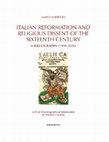
Italian Reformation and Religious Dissent of the Sixteenth Century: A Bibliography (1998-2020), Alessandria, Edizioni dell'Orso, 2021
The religious conflicts of the sixteenth century and the troubled biographies of preachers, exile... more The religious conflicts of the sixteenth century and the troubled biographies of preachers, exiles and those investigated by the Inquisition have never ceased to fascinate historians of the Reformation and the Counter-Reformation who in recent years have drawn up a more complex picture of the various currents and groups who animated doctrinal dissent in Italy and which included men and women from every social class. This bibliography is intended to provide a map of the studies published from 1998 – the year when the Archives of the Index and the Roman Holy Office were opened – until 2020 passing through the fifth centenary of the Protestant Reformation (2017). It extends and follows the format of an imposing work that has stimulated scholars to continue their efforts of digging into the religious history of sixteenth century Italy: The Italian Reformation of the Sixteenth Century and the Diffusion of Renaissance Culture: A Bibliography of the Secondary Literature (Ca. 1750-1997), compiled by John Tedeschi in association with James M. Lattis (Modena, Panini, 2000).
Edited Books by Marco Albertoni
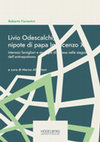
Livio Odescalchi (1652–1713), nephew of Innocent XI, paid the price in his youth for the pope’s a... more Livio Odescalchi (1652–1713), nephew of Innocent XI, paid the price in his youth for the pope’s anti-nepotism policy, who chose to deny him any official position. During the same period, Livio had to submit to the oppressive control of his uncle, his testamentary guardian – an unhappy situation that, at the time, caused him to be considered a symbol of misfortune. In spite of this, the young man was able to lay the foundations for a strategy of economic and social ascent that would later bear fruit. After the death of Innocent XI, a period of compensation began, built on the accumulation of honours and possessions, financial investments, commissions and art trades, patronage, social celebrations, and international networks.
This book, based on Roberto Fiorentini’s doctoral thesis (Aprilia 1987 – Washington 2019), examines both phases of Livio Odescalchi’s life, analysing them in the light of a considerable quantity of archival documents, some of which are completely unpublished.
Papers by Marco Albertoni
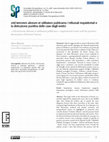
This paper looks at the destruction of houses as a method employed by inquisitorial ... more This paper looks at the destruction of houses as a method employed by inquisitorial courts, first in the Middle Ages, then during the modern age, to punish the most dangerous heretics after their conviction at the stake. After tracing the legal foundations in Roman law (Lex Quisquis, Lex Iulia Maiestatis), medieval and modern normative and jurisprudential sources are highlighted: in particular some conciliar dictates (Toulouse, Béziers), and the precepts found in inquisitorial and anti-heretical manuals and treatises. Once the theoretical framework has been described, the essay goes on to examine concrete cases, analysing a number of episodes of punitive executions carried out by Spanish (Seville, Valladolid, Madrid), Portuguese (Coimbra - Lisbon) and Roman (Faenza - Imola, Venice, San Sisto) inquisitorial courts. Overall, the analysis reveals a close link between this practice and the confiscation of the heretic's property. At the same time it is also clear that the inquisitors attempted to eternalise their convictions, cutting out any possibility of rehabilitating the public memory of the condemned.
Il saggio indaga il reazionarismo di Monaldo Leopardi attraverso gli attacchi che agli inizi degl... more Il saggio indaga il reazionarismo di Monaldo Leopardi attraverso gli attacchi che agli inizi degli anni Trenta dell'Ottocento sferrò contro i gruppi della finanza internazionale e contro alcuni esponenti delle alte sfere curiali, proprio nel momento in cui i primi e le seconde stringevano patti di prestito economico a interesse che mettevano in discussione, nella teoria e nella pratica, la dottrina cattolica sull'annoso tema dell'usura.
The author examines monuments of infamy in the early modern period. After reconstructing the stat... more The author examines monuments of infamy in the early modern period. After reconstructing the status questionis of memory studies and clarifying the interpretive perspective adopted, the discussion turns to the characteristics of the phenomenon. It begins with a case study from 1796 and presents a series of earlier monuments of infamy, both of which show how widespread these were throughout early modern Europe. The author hypothesizes that, in the absence of precise laws about memory condemnations, some of them constituted a reference on the jurisprudential and cultural level. The conclusion explores the connection between monuments of infamy, crimen laesae maiestatis and damnatio memoriae.
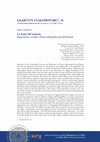
In the seventeenth century, the Nunciature in Venice represented for the Papacy not only an impor... more In the seventeenth century, the Nunciature in Venice represented for the Papacy not only an important observatory on the political and religious life of the Republic, but also a social and cultural barometer in a phase of important transformations. Dismissing the ambassador's clothes, the nuncio in Venice, in fact, wore those of a judge. Presiding over the tribunal of the Holy Office, where he often came into direct contact with those who nourished the patchwork of superstitious beliefs that challenged the monopoly of the otherworldly that he was called upon to defend.
The trials of the Venetian Holy Office in the first half of the seventeenth century, largely for magic and superstition, make it possible today to observe and examine curious syncretisms, not only through interrogations – sources of notoriously dubious information – but also from the direct examination of texts that were confiscated from the defendants and attached to the dossiers. These include both well-known books of higher tenor and hand-copied notebooks and booklets of unknown origin. Moving from the more general Venetian context of the first half of the 17th century to the particulars of certain cases, this essay looks at the direct and indirect involvement of the clergy in the spread of superstition and the occult in Venice. Were involved both low ranking clergymen and prominent figures such as the nuncio Francesco Vitelli, a cultured man with highly ambiguous interests.

The nunciatures papers have often been used to reconstruct diplomatic and political events, but r... more The nunciatures papers have often been used to reconstruct diplomatic and political events, but rarely as a medium to understand social and cultural history. Between 1632 and 1643, Decio Francesco Vitelli, an erudite ecclesiastic with very heterogeneous interests, was nuncio in Venice. Vitelli was born in Bomarzo, and probably grew up in the Palazzo Orsini, overlooking the "Sacro Bosco" (now known as "Parco dei mostri"). Both the “Palazzo” and the “Sacro Bosco” were commissioned by Vicino Orsini and inspired by the “Hypnerotomachia Poliphili”, thus being rich in epigraphs, gigantomachies and references to hermeticism as well as to classical culture, and belonging to a refined erudition, always set on the edge of scepticism. When appointed nuncio, Vitelli found in Venice an ideal place to satisfy his omnivorous desire for knowledge, stimulated by the environment he had grown up in. During over 11 years in the Lagoon, he was able to enlarge his collection of coins, medals, statues and paintings, as well as satisfy his naturalist interests (he used to keep animals with him: a dog and even a caged bear), and his bibliophilia. In fact, in his Venetian residence Vitelli created a "wunderkammer" in which he also jealously kept forbidden books.
Among the over two hundred and fifty inquisitorial trials that he had to manage as nuncio, almost one hundred were trials for magic, necromancy, spells and witchcraft. But if, on the one hand, Vitelli inquired who owned, sold, read or used the grimoires, on the other he was himself a reader and owner of books such as the “Clavicula Salomonis”, to which he associated texts and collections of "non-conforming" authors, like Ulisse Aldrovandi or Pietro Aretino.
Based on the inquisitorial trials managed by Vitelli, as well as on his collections and correspondence with the Secretary of the State and with other inquisitors, this article aims to stress how erudition and power were weapons that allowed Vitelli to escape the ecclesiastical jurisprudence. Besides, I propose some hypotheses about anti-magical trials as contexts in which ecclesiastics passionate about the natural and the supernatural as Vitelli could acquire new information, thus broadening the "dark side" of their culture and their private collections.
Nacque il 30 agosto 1582 a Bomarzo dall'unione di due rami della famiglia gentilizia originaria d... more Nacque il 30 agosto 1582 a Bomarzo dall'unione di due rami della famiglia gentilizia originaria di Città di Castello. Il padre, Vincenzo, dei conti di Montefiore, era generale di fanteria dell'esercito pontificio, ma morì il 4 settembre 1583, quando Francesco aveva appena un anno; la madre, Faustina Vitelli, era figlia naturale del condottiero Gianluigi Chiappino, dei marchesi di Cetona, e morì prima del 1602. Decimo e probabilmente ultimo figlio, da cui Decio, in età adulta omise puntualmente gli altri nomi di battesimo, firmandosi solo con il nome Francesco.
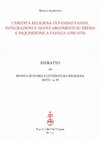
Between 1550 and 1570, Faenza was probably the town with the largest number of heretics in the St... more Between 1550 and 1570, Faenza was probably the town with the largest number of heretics in the State of the Church. In the 1920’s, Monsignor Francesco Lanzoni analyzed this phenomenon, publishing a series of contributions that were fundamental for the researchers who later studied heresy in the Romagna area. Lanzoni’s works, however, had footnotes that were limited and discontinuous, but above all, part of the documents that he used disappeared because of the bombing in Faenza in 1944, thus creating the problem of source checking. Starting from Lanzoni’s manuscripts and reviewing both his mentioned and unmentioned sources, this paper aims to review them in light of the progress that research on Holy Office and heresy has produced during the last century, integrating them with new documents. Based on this assessment, this paper speculates on the reasons why of such a gap between Faenza and adjacent cities (Forlì and Imola) in the spreading of heresy, highlighting the importance of the role played by the functioning and composition of the institutions, the network of patronage and the idolization of the famous local heretic Fanino Fanini.
Teaching Documents by Marco Albertoni
Revisione dei contenuti del manuale e fare Storia delle unità 3, 4, 5.




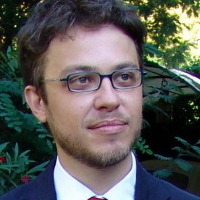






Uploads
Books by Marco Albertoni
Edited Books by Marco Albertoni
This book, based on Roberto Fiorentini’s doctoral thesis (Aprilia 1987 – Washington 2019), examines both phases of Livio Odescalchi’s life, analysing them in the light of a considerable quantity of archival documents, some of which are completely unpublished.
Papers by Marco Albertoni
The trials of the Venetian Holy Office in the first half of the seventeenth century, largely for magic and superstition, make it possible today to observe and examine curious syncretisms, not only through interrogations – sources of notoriously dubious information – but also from the direct examination of texts that were confiscated from the defendants and attached to the dossiers. These include both well-known books of higher tenor and hand-copied notebooks and booklets of unknown origin. Moving from the more general Venetian context of the first half of the 17th century to the particulars of certain cases, this essay looks at the direct and indirect involvement of the clergy in the spread of superstition and the occult in Venice. Were involved both low ranking clergymen and prominent figures such as the nuncio Francesco Vitelli, a cultured man with highly ambiguous interests.
Among the over two hundred and fifty inquisitorial trials that he had to manage as nuncio, almost one hundred were trials for magic, necromancy, spells and witchcraft. But if, on the one hand, Vitelli inquired who owned, sold, read or used the grimoires, on the other he was himself a reader and owner of books such as the “Clavicula Salomonis”, to which he associated texts and collections of "non-conforming" authors, like Ulisse Aldrovandi or Pietro Aretino.
Based on the inquisitorial trials managed by Vitelli, as well as on his collections and correspondence with the Secretary of the State and with other inquisitors, this article aims to stress how erudition and power were weapons that allowed Vitelli to escape the ecclesiastical jurisprudence. Besides, I propose some hypotheses about anti-magical trials as contexts in which ecclesiastics passionate about the natural and the supernatural as Vitelli could acquire new information, thus broadening the "dark side" of their culture and their private collections.
Teaching Documents by Marco Albertoni
This book, based on Roberto Fiorentini’s doctoral thesis (Aprilia 1987 – Washington 2019), examines both phases of Livio Odescalchi’s life, analysing them in the light of a considerable quantity of archival documents, some of which are completely unpublished.
The trials of the Venetian Holy Office in the first half of the seventeenth century, largely for magic and superstition, make it possible today to observe and examine curious syncretisms, not only through interrogations – sources of notoriously dubious information – but also from the direct examination of texts that were confiscated from the defendants and attached to the dossiers. These include both well-known books of higher tenor and hand-copied notebooks and booklets of unknown origin. Moving from the more general Venetian context of the first half of the 17th century to the particulars of certain cases, this essay looks at the direct and indirect involvement of the clergy in the spread of superstition and the occult in Venice. Were involved both low ranking clergymen and prominent figures such as the nuncio Francesco Vitelli, a cultured man with highly ambiguous interests.
Among the over two hundred and fifty inquisitorial trials that he had to manage as nuncio, almost one hundred were trials for magic, necromancy, spells and witchcraft. But if, on the one hand, Vitelli inquired who owned, sold, read or used the grimoires, on the other he was himself a reader and owner of books such as the “Clavicula Salomonis”, to which he associated texts and collections of "non-conforming" authors, like Ulisse Aldrovandi or Pietro Aretino.
Based on the inquisitorial trials managed by Vitelli, as well as on his collections and correspondence with the Secretary of the State and with other inquisitors, this article aims to stress how erudition and power were weapons that allowed Vitelli to escape the ecclesiastical jurisprudence. Besides, I propose some hypotheses about anti-magical trials as contexts in which ecclesiastics passionate about the natural and the supernatural as Vitelli could acquire new information, thus broadening the "dark side" of their culture and their private collections.
https://studiumanistici.uniroma3.it/didattica/altre-attivita-formative/seminari-del-dipartimento/politica-culture-e-istituzioni-in-eta-moderna-tra-roma-e-il-mondo/